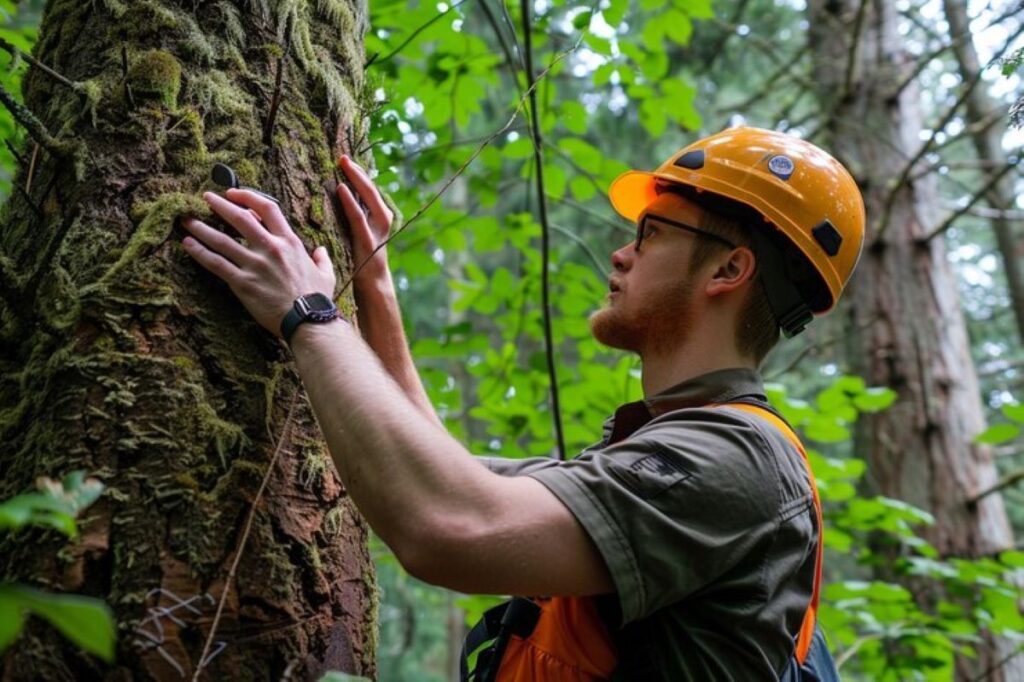How Can You Prepare Your Trees for Storm Season?
Safe tree management before storm season protects both property and lives. North Shore’s exposure to severe weather makes proactive tree care essential, as unprepared trees can cause catastrophic damage to homes, vehicles, and power infrastructure during high winds and heavy rainfall.
North Shore residents face unique challenges that demand expert Arborist North Shore guidance. The region’s combination of coastal winds, mature tree populations, and dense residential areas creates heightened storm risks. Local arborists understand these specific conditions and can identify vulnerabilities that untrained eyes might miss.
Storm season preparation requires a systematic approach across multiple areas:
- Professional inspections to detect hidden structural weaknesses and disease
- Strategic pruning to remove hazardous branches whilst maintaining tree health
- Root and soil assessment to ensure trees remain anchored during extreme weather
- Emergency planning for rapid response when storms strike
Trees showing signs of decay, poor structure, or pest damage become dangerous projectiles in storm conditions. A single falling branch can cause thousands of pounds in damage or serious injury. Arborist North Shore expert tips for safe tree management before storm season emphasise prevention over reaction—addressing problems before weather events occur costs significantly less than emergency tree removal and property repairs.
Starting preparations at least two months before peak storm season allows time for thorough assessments and necessary remedial work.
What Are the Essential Tree Inspection Practices Before Storm Season?
Annual tree inspection North Shore services by qualified arborists form the foundation of effective storm preparation. Professional assessments identify vulnerabilities that untrained eyes typically miss, preventing costly damage and safety hazards. These regular tree inspections are crucial not just for storm preparation, but also for overall tree health.
During an arborist tree assessment, certified professionals examine multiple critical areas:
- Structural integrity: Checking for cracks, splits, weak branch unions, and co-dominant stems that may fail under wind load
- Disease indicators: Spotting fungal growth, cankers, discoloured foliage, or unusual bark patterns signalling internal decay
- Pest activity: Detecting bore holes, sawdust accumulation, or insect colonies that compromise tree strength
- Root health: Assessing soil heaving, exposed roots, or fungal fruiting bodies indicating root rot
It’s important to note that early signs of tree damage often appear months before storms strike. Dead branches in the canopy, hollow-sounding trunks when tapped, or mushrooms growing at the tree base all warrant immediate professional attention. North Shore’s coastal conditions create unique challenges including salt exposure and wind stress, making expert evaluation particularly valuable for identifying region-specific vulnerabilities before severe weather arrives.
How Can Pruning and Tree Removal Improve Storm Safety?
Tree pruning techniques directly reduce storm-related hazards by eliminating weak points before extreme weather arrives. Professional arborists remove dead, diseased, or structurally compromised branches that become projectiles during high winds. Crown thinning reduces wind resistance whilst maintaining the tree’s natural shape, allowing air to flow through rather than pushing against a dense canopy.
Storm damage prevention requires addressing structural defects that make trees vulnerable. Co-dominant stems—where two main trunks compete for dominance—create weak attachment points prone to splitting under storm stress. Arborists correct these issues through selective pruning or install cabling systems to provide additional support. This preventative approach strengthens the tree’s architecture before weather events test its integrity.
Hazardous tree removal becomes necessary when trees pose imminent risks that pruning cannot resolve. Signs requiring removal include:
- Large vertical cracks extending through the trunk
- Extensive cavities or decay in major structural areas
- Severe lean towards buildings or power lines
- Fungal growth indicating advanced root rot
- Multiple dead branches throughout the canopy
Trees exhibiting these conditions lack the structural integrity to withstand storm forces. Removing them before storm season protects property and prevents potential injuries. North Shore’s coastal exposure to strong winds makes proactive removal decisions particularly critical for maintaining neighbourhood safety during severe weather events.
What Emergency Preparedness Measures Should Homeowners Take for Trees?
Emergency tree management requires a proactive plan before storms arrive. Create a written response strategy identifying vulnerable trees on your property, noting their proximity to structures, power lines, and high-traffic areas. Document tree conditions with photographs and maintain contact details for professional emergency tree services readily accessible.
Secure loose outdoor furniture, garden equipment, and children’s play structures away from trees that could shed branches. Clear gutters and drains around tree bases to prevent waterlogging that destabilises root systems. For trees with known weaknesses, consider temporary support systems installed by qualified professionals.
Storm preparedness North Shore demands knowing when DIY assessment becomes dangerous. Contact licensed arborists immediately if you observe:
- Trees leaning toward structures after wind events
- Large branches cracked but still attached
- Exposed or lifted root plates
- Trees in contact with power lines
Arborist North Shore expert tips for safe tree management before storm season emphasise that attempting to remove storm-damaged trees yourself risks serious injury. Professional services have specialised equipment, insurance coverage, and training to handle hazardous situations safely whilst protecting your property.

How Does Soil and Root Care Contribute to Tree Stability During Storms?
The Importance of Soil Testing for Trees
Soil testing for trees is crucial in creating strong root systems that can withstand storms. It helps us understand the nutrient deficiencies and pH imbalances in the soil that can weaken a tree’s ability to stay anchored. Healthy roots need specific soil conditions to grow strong enough to resist powerful winds and heavy rain.
How Professional Specialists Help
Professional root health care North Shore specialists play a vital role in maintaining tree stability. They conduct thorough soil analysis to identify any problems before they become serious threats. This testing usually looks at:
- Levels of nitrogen, phosphorus, and potassium
- Soil pH (which should ideally be between 6.0-7.0 for most tree species)
- Amount of organic matter in the soil
- Severity of soil compaction
The Benefits of Soil Aeration
When compacted ground prevents oxygen from reaching the roots, it can lead to shallow root growth that makes trees more vulnerable during storms. This is where soil aeration benefits come into play. Arborists use specialised tools to create channels in the soil, allowing roots to grow deeper and establish stronger anchoring systems.
Addressing Girdling Roots and Buried Root Collars
Another important aspect of tree stability is addressing issues with the roots themselves. Girdling roots (those that wrap around the trunk) and buried root collars (the area where the trunk meets the roots) can both destabilise trees. By offering root excavation services, arborists can carefully expose and fix these problems, improving the tree’s ability to stay upright when faced with severe weather conditions.
Ensuring Ongoing Health with Regular Amendments
In addition to these proactive measures, it’s also essential to ensure that trees receive regular care based on soil test results. This includes making necessary amendments to the soil such as adding organic matter or adjusting pH levels. By doing so, we can help trees maintain their robust root structure which is critical for surviving storm seasons year after year.
What Are Effective Pest and Disease Management Strategies Pre-Storm Season?
Pest management trees North Shore requires vigilant monitoring throughout the year, with particular attention before storms. Weakened trees from pest infestations or diseases become prime candidates for failure during high winds and heavy rain.
Regular inspections should identify common threats like:
- Borers creating structural weakness in trunks and branches
- Scale insects depleting tree vitality
- Fungal infections causing wood decay
- Leaf diseases reducing photosynthesis capacity
Integrated pest management combines multiple approaches rather than relying solely on chemical treatments. This strategy includes biological controls, cultural practices like proper watering and mulching, and targeted interventions only when thresholds are exceeded. Disease prevention in trees starts with maintaining overall tree health through proper nutrition and stress reduction. Visit http://www.dbca.wa.gov.au/management/threat-management/plant-diseases to get more about plant diseases.
Arborists can detect subtle signs of infestation that homeowners miss, such as unusual bark patterns, premature leaf drop, or sawdust accumulations. Early intervention prevents minor issues from becoming major structural problems that compromise storm resistance. Professional treatment plans address both immediate threats and long-term tree resilience.
Why Is Compliance with Local Tree Regulations Important Before Storm Season?
Can you remove any tree on your property without permission? No—North Shore councils enforce strict regulations requiring tree removal permits North Shore for many species, particularly protected native trees and those exceeding specific height thresholds. Failing to obtain proper authorisation before storm season can result in substantial fines and legal complications.
Local council regulations trees often protect heritage specimens and environmentally significant species. Before undertaking any pre-storm tree work, homeowners must verify whether their trees fall under protected categories. Some councils maintain registers of significant trees that require special approval even for routine maintenance.
Safety clearances power lines present critical compliance requirements. Electricity providers mandate minimum distances between vegetation and overhead lines—typically 1-3 metres depending on voltage. Only qualified professionals with appropriate electrical safety training can work near power infrastructure.
Arborist North Shore expert tips for safe tree management before storm season emphasise engaging certified professionals who understand local regulatory frameworks. Licensed arborists navigate permit applications, identify protected species, and ensure all work meets council standards whilst addressing storm-related hazards. This expertise prevents costly legal issues whilst maintaining community safety standards.
Why Should You Hire Professional Arborists Instead of DIY Tree Maintenance?
Doing tree work yourself can be dangerous. Homeowners risk serious injuries from falls, chainsaw accidents, and falling branches. Plus, without the right knowledge, it’s easy to make mistakes that harm the tree’s health and stability.
Licensed arborists North Shore have the training needed to do the job safely and correctly. They understand how trees grow, how to prune them properly, and how to assess potential hazards. This expertise helps them avoid costly errors that could damage your trees or property.
Insured arborist services provide an extra layer of protection for homeowners. If something goes wrong during the tree work—like an accident involving a worker or damage to a nearby structure—insurance coverage ensures you’re not held liable.
The unique conditions in North Shore—such as coastal winds, specific soil types, and native species—require local knowledge that DIY methods can’t provide. Professional arborists are familiar with these factors and can tailor their approach accordingly.
The Benefits of Professional Tree Maintenance
Here are some advantages of hiring professionals for your tree maintenance needs:
- Access to specialised equipment: Professional arborists have tools like aerial lifts and rigging systems that allow them to reach high branches safely and efficiently.
- Knowledge of species-specific growth patterns: Different tree species have unique characteristics that influence how they should be pruned or maintained. Arborists understand these nuances and can apply appropriate techniques.
- Ability to work near power lines: When trees are located close to utility lines, special precautions must be taken during pruning or removal. Certified arborists know how to maintain proper clearances and ensure safety in such situations.
- Understanding optimal pruning timing: Each tree variety has specific times when pruning is most beneficial—for example, promoting flowering or controlling size. Arborists are aware of these timings and schedule their work accordingly.
See Also : How Deep Should Stump Grinding Go to Stop Regrowth?
The Efficiency of Professional Tree Services
Time is often a concern when it comes to tree maintenance. While you may think that doing it yourself will save time, the reality is that professional arborists can complete tasks much faster than untrained individuals.
What might take you days or even weeks to finish can be done by experts in just a few hours. This efficiency not only minimises disruption on your property but also ensures that your trees remain healthy and structurally sound—especially before upcoming storms or adverse weather conditions.
By choosing professional arborist services over DIY methods, you’re prioritising safety, expertise, and efficiency in caring for your trees.

How Can Homeowners Document Storm Damage for Insurance Claims Effectively?
Comprehensive storm damage documentation trees starts immediately after it’s safe to assess your property. Take multiple photographs from different angles showing the full extent of damage, including close-ups of broken branches, uprooted trees, and any property impact.
Create a detailed written report noting the date, time, and specific damage to each tree. Record measurements where possible and document pre-existing tree conditions if you have prior photos. This evidence proves essential for insurance claims after storm damage.
Never attempt damage assessment during dangerous conditions. Wait until authorities declare the area safe, and keep clear of downed power lines or unstable trees. Professional arborists can provide detailed assessment reports that insurance companies trust, documenting structural damage and necessary remediation work.
Follow post-storm safety protocols by securing the damaged area and contacting your insurer promptly. Licensed arborists familiar with Arborist North Shore expert tips for safe tree management before storm season can provide documentation that meets insurance requirements whilst ensuring safe cleanup procedures.

